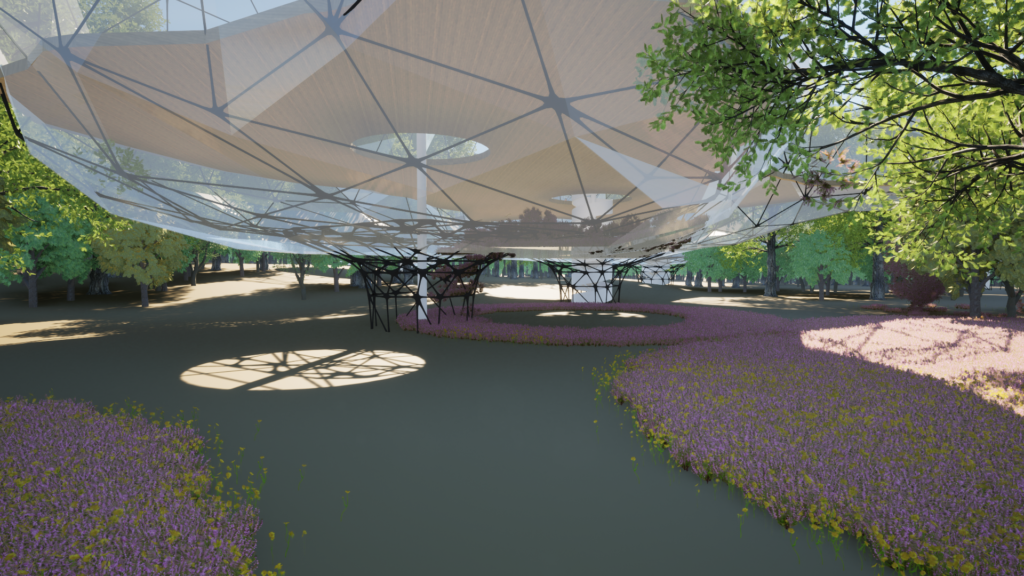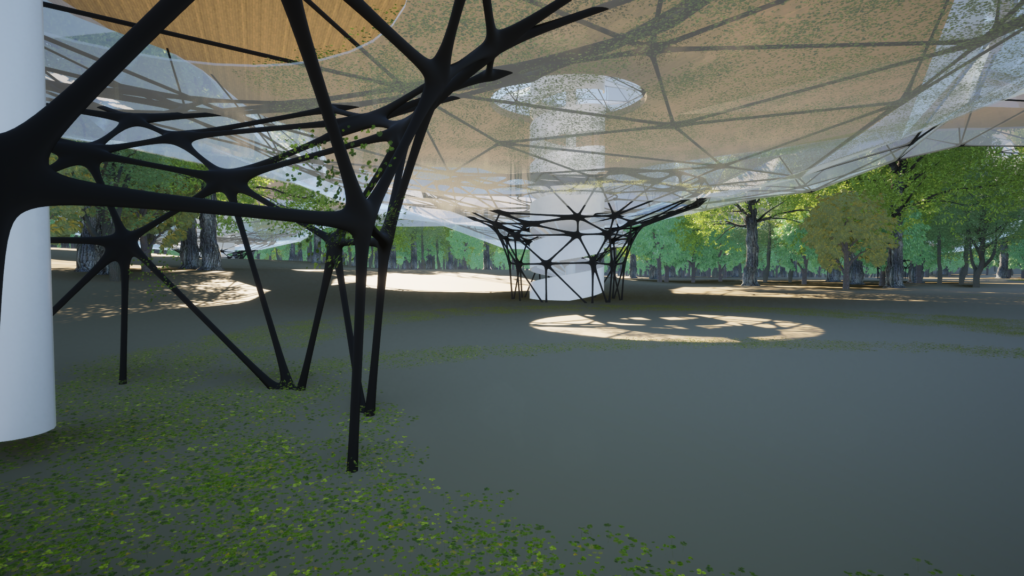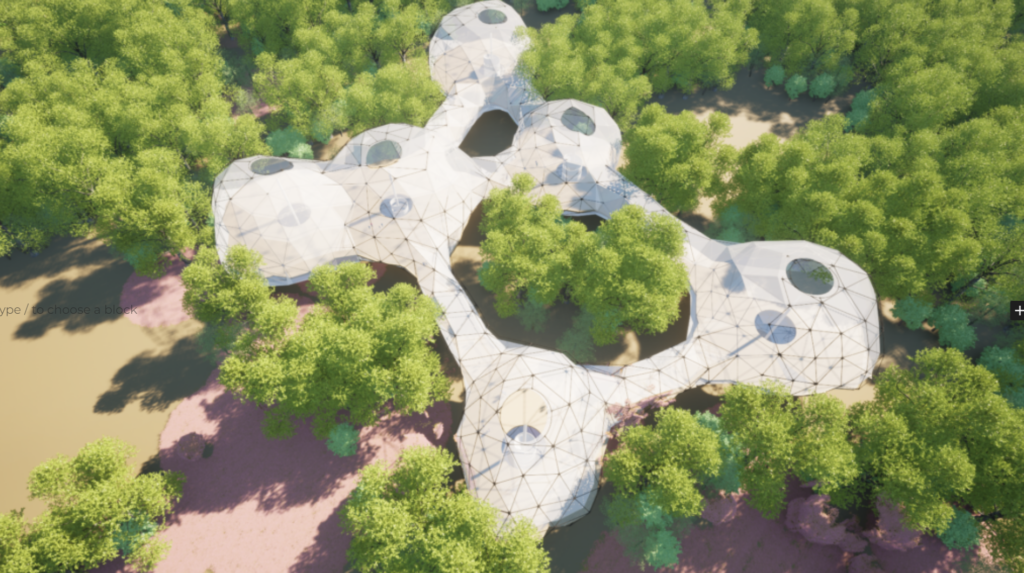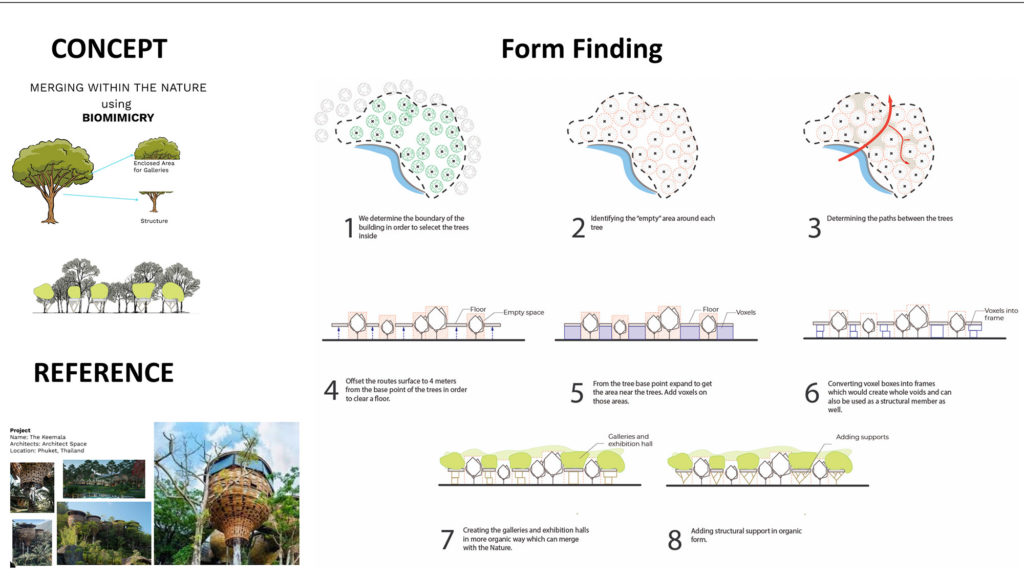
Concept
For the final exercise in complex forming we were asked to developed a museum for wildlife by using one of the concepts introduced during the 1st term. We choose to work with VOXELISATON.
Methodological Approach to Design and Form-Finding
Our project commenced with a systematic approach, encompassing several critical stages:
- Preliminary Site Identification: Our initial task involved a meticulous selection of the project’s locale.
- Integration with Natural Elements: Subsequently, we strategically positioned void spaces amidst the arboreal landscape, aligning with the spatial requisites of our design.
- Elevation of Floors and Galleries: The design incorporates elevated floors and galleries, underpinned by robust structural support on the ground level.
- Interconnectivity of Galleries: A key aspect of our design is the establishment of connectivity between all galleries via bridges, thus facilitating fluid movement and spatial coherence.
- Incorporation of Staircases and Skylights: The design is further augmented by the strategic placement of staircases and skylights, ensuring an unobtrusive blend of the structure with its surrounding natural environment.
Pseudo Code – Structural Division
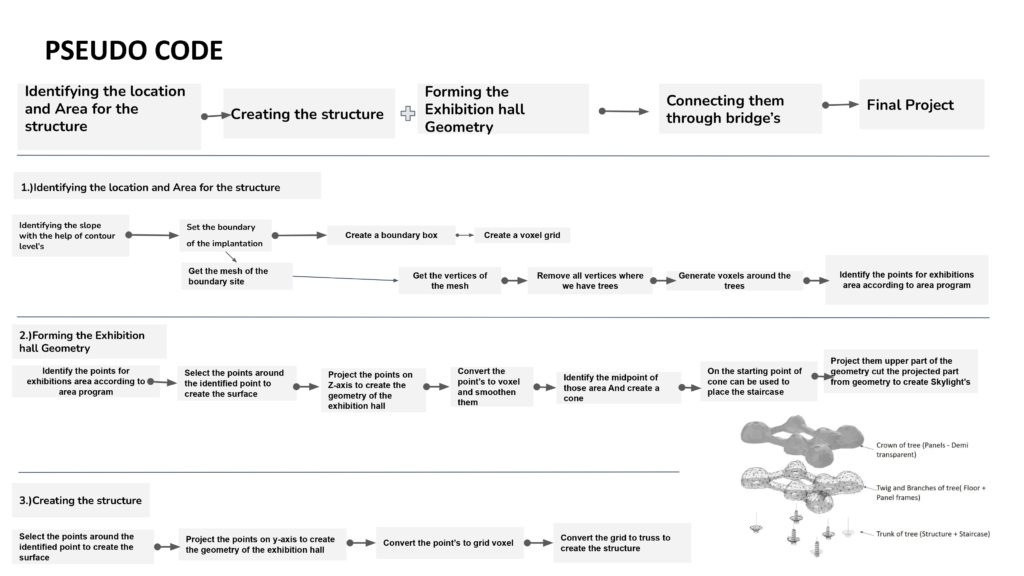
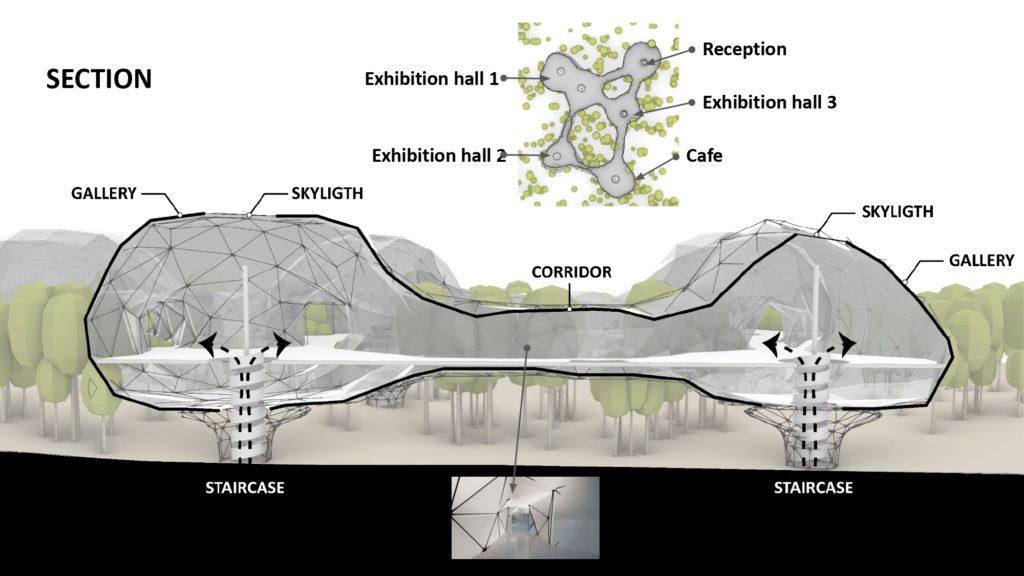
The project was delineated into three fundamental components:
- Determination of Location and Area: This entailed the precise identification of the structure’s locale.
- Formation of Geometric Structures: This phase focused on the architectural design of the exhibition hall and ancillary spaces.
- Architectural Design: The culmination of our process involved the comprehensive architectural design of the structure.
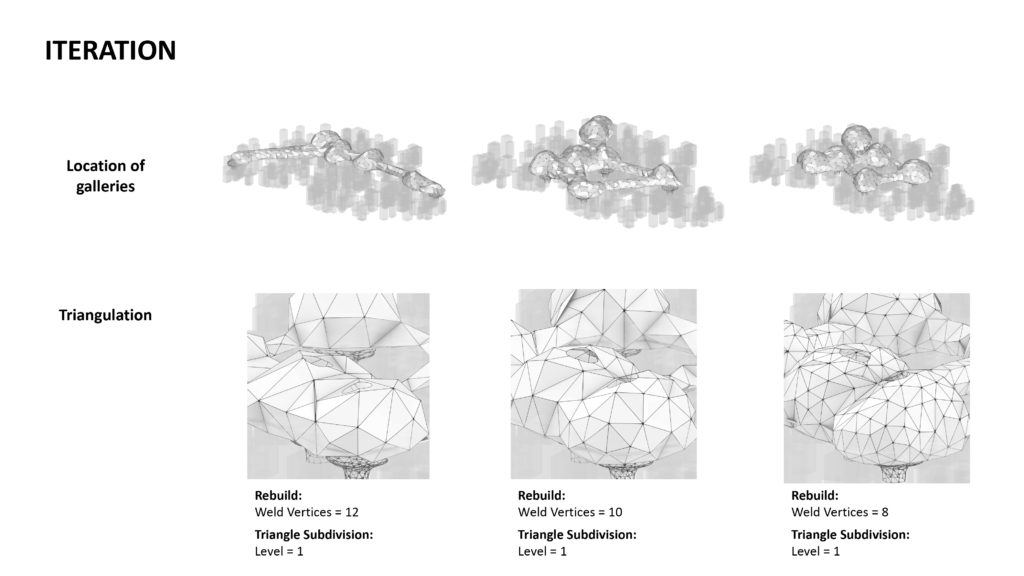
During our form-finding stage, we engaged in iterative processes:
- Primarily, locating optimal sites for our galleries.
- Secondly, determining the most suitable triangulation parameters for an organic geometric progression, utilizing a weld vertex configuration of eight for optimal design integrity.
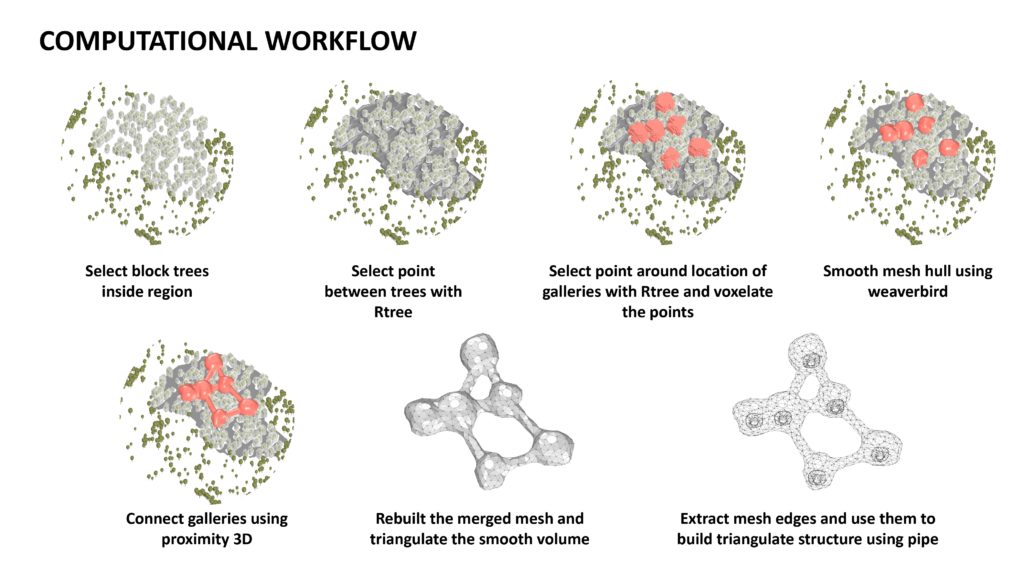
Computational Workflow and Site Selection
Our computational process began with the establishment of project perimeters, isolating arboreal elements within. Utilizing R-tree data structures and voxelization techniques, we pinpointed suitable areas within the boundary for our program. The bridges were interconnected using a 3D proximity methodology, culminating in the extraction of a mesh extending to the ground, where a pipe-like transformation was applied.
The site selection was guided by the topography, with a preference for gently contoured terrain to ensure a harmonious integration of our structures with the natural environment and to achieve the intended elevation for our galleries.
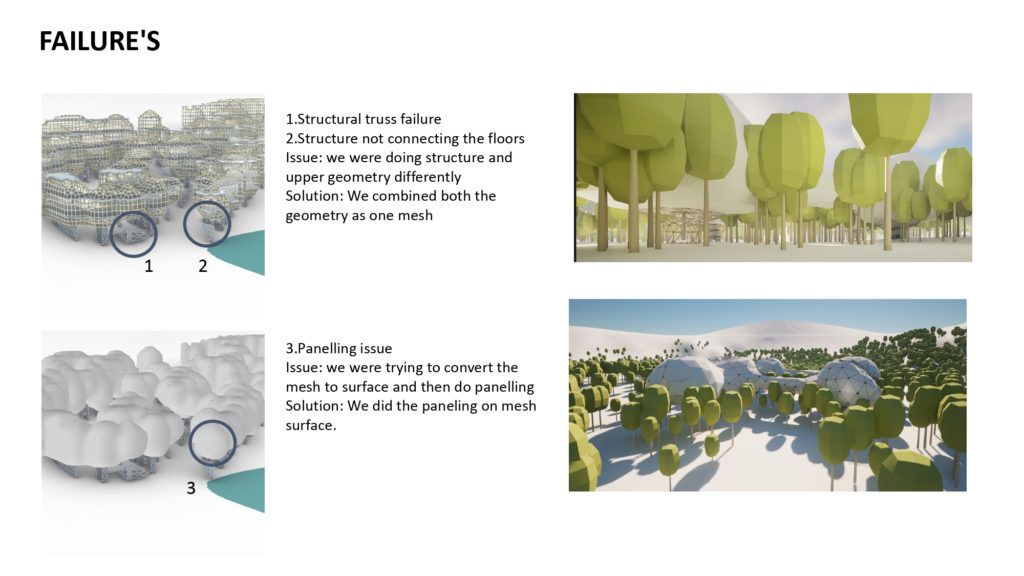
Challenges Overcome
Throughout this project, we navigated through several challenges:
- Structural Truss Failure: This was addressed through the enhancement of the truss design, ensuring greater structural stability.
- Integration of Floors with Structural Elements: We resolved this by unifying both components into a singular mesh for enhanced cohesion.
- Panelling Complexities: These were surmounted by adapting our approach to panel directly onto the mesh surface, yielding more efficient outcomes.
Sectional View and Layout Plan
The sectional view elucidates the interconnectedness of two galleries, complete with corridors, staircases, and skylights. The layout plan provides an in-depth depiction of the gallery arrangement, including pivotal areas such as the reception and cafeteria, manifesting a unified and functional architectural design.
